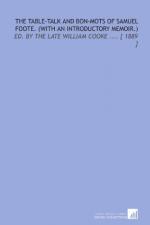|
This section contains 7,400 words (approx. 25 pages at 300 words per page) |

|
SOURCE: Kinservik, Matthew J. “The Censorship of Samuel Foote's The Minor (1760): Stage Controversy in the Mid-Eighteenth Century” Studies in the Literary Imagination 32, no. 2 (1999) pp. 89-103.
In the essay which follows, Kinservik examines the controversy surrounding a work by Foote in which he allegedly satirized particular religious figures. Kinservik also argues that Foote accepted the censorship of his play as a means of legitimizing his works in the public eye.
Samuel Foote, known in his day as the “English Aristophanes,” profited from his talent for mimicking real people on the stage and presenting daring satiric plays within—and sometimes beyond—the bounds of the censorship imposed by the Stage Licensing Act of 1737. His anti-Methodist play, The Minor (1760), is rightly considered an important example of his satiric technique and as the occasion for an important instance of theatrical censorship. The play featured an epilogue in which Foote mimicked the cross-eyed...
|
This section contains 7,400 words (approx. 25 pages at 300 words per page) |

|


